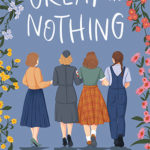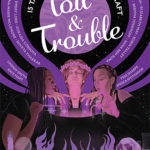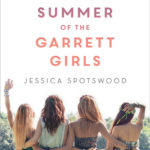On Writing Diversity
I grew up in a tiny, one-stoplight town. There were lots of lovely things about it. It is beautiful; people are friendly; I had lots of teachers who taught my parents and taught with my grandfather. I felt safe. In retrospect, though, I wonder how many of my classmates didn’t. There were no out, openly dating queer kids. There were maybe a dozen people of color–any color. We definitely didn’t have off school for non-Christian holidays–though we did have off the first day of deer-hunting season! (Seriously.)
One of my best friends from high school is gay. He came out maybe six years ago. I was the first person he told.
He was really afraid to say, hey, this is who I am; I’m attracted to other guys; I’m gay. Even to his best friends, people he’d known since we were twelve. To his family. To his own dad.
That is deeply fucked.
LGBT rights have been an important issue to me ever since.
There’s been a lot of discussion lately about writing diversity. I was sort of horrified by Malinda Lo’s statistics about how less than 1% of YA books feature queer characters–not just protagonists, but any characters.
I think every girl should be able to see herself reflected in stories, no matter who she wants to kiss.
The first book I wrote wouldn’t have been in that 1%. It had very little diversity, of any kind. It took place in a town like the one I grew up in; I modeled it after what I knew. It’s really easy to do that.
But when I started writing BORN WICKED, I thought about it. I think we have a responsibility to think about it.
Does this girl’s love interest have to be a boy? Could it be another girl? Does this character have to be white? Sometimes the answers are yes, and that’s okay. But sometimes it’s not. Sometimes it’s more interesting, and honest, if it’s not.
There are girls who like to kiss other girls in my book; there are witches who are black and Spanish and Japanese. I have been lucky in that my editor encouraged me in this. I told her I thought in book two there’d be a romance between Characters A and B (both girls); she suggested it might also involve Character C, earlier on, and she was so right and it made an incredible amount of sense for this character.
Part of this thinking-about-it was inspired by my husband, The Playwright. There are more available actresses than actors, and sort of by necessity, he started thinking: does this character have to be a man, or could it be a woman? He writes women all the time. He doesn’t let the fear of being a guy, and getting it wrong, stop him. His most recent show centered around a pregnant woman; he has obviously never been pregnant.
I don’t know what it’s like to be a nineteenth-century governess either. Or a witch. My characters’ experience might not be yours. You might think I get things wrong. But I still think it’s worth trying. At the minimum, I will learn new things because I will be thinking more about what it’s like to be someone else, to live in their skin, with their hopes and fears and loves.
Isn’t that the point of writing? Or reading, for that matter?
Anyway, that’s my two cents on the subject. I have lots to learn, but I am thinking and I am trying.
I hope we can make the numbers a little bit better in 2012. I hope we can make the world outside of books better too.





Caring is the first step, thinking is the second, and trying is the third. That's how all worthy journeys begin and the only way we ever get anywhere. Keep it up. 🙂